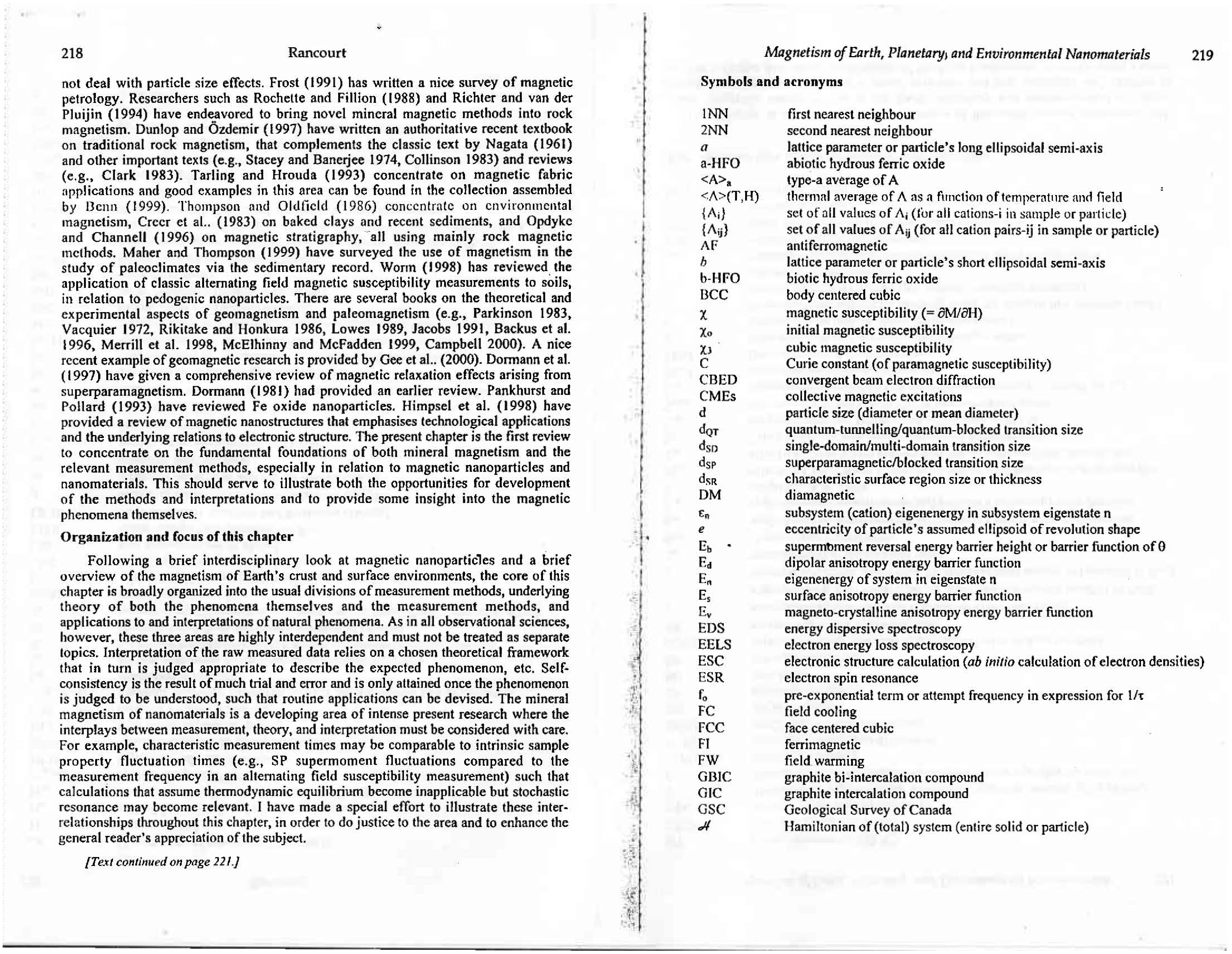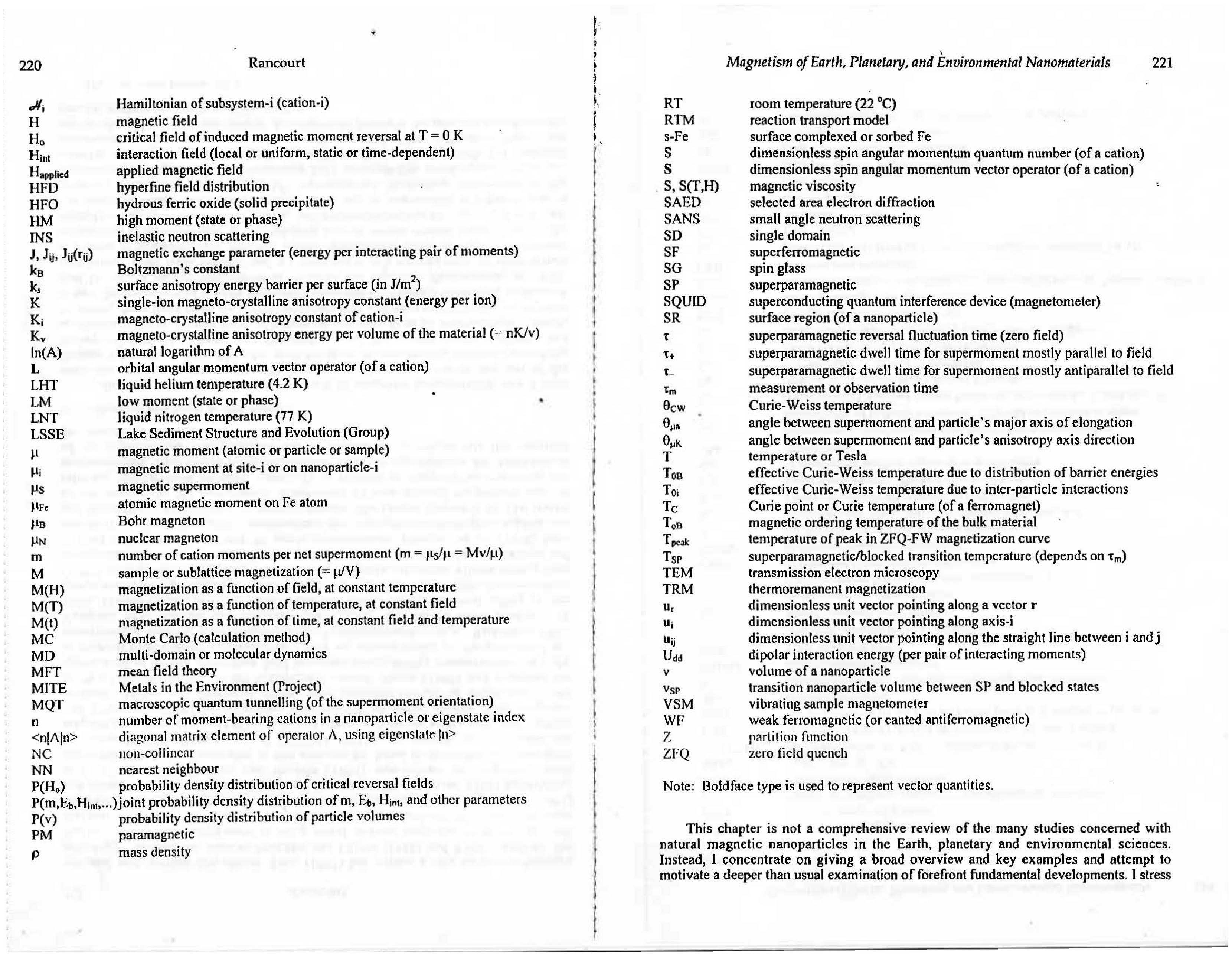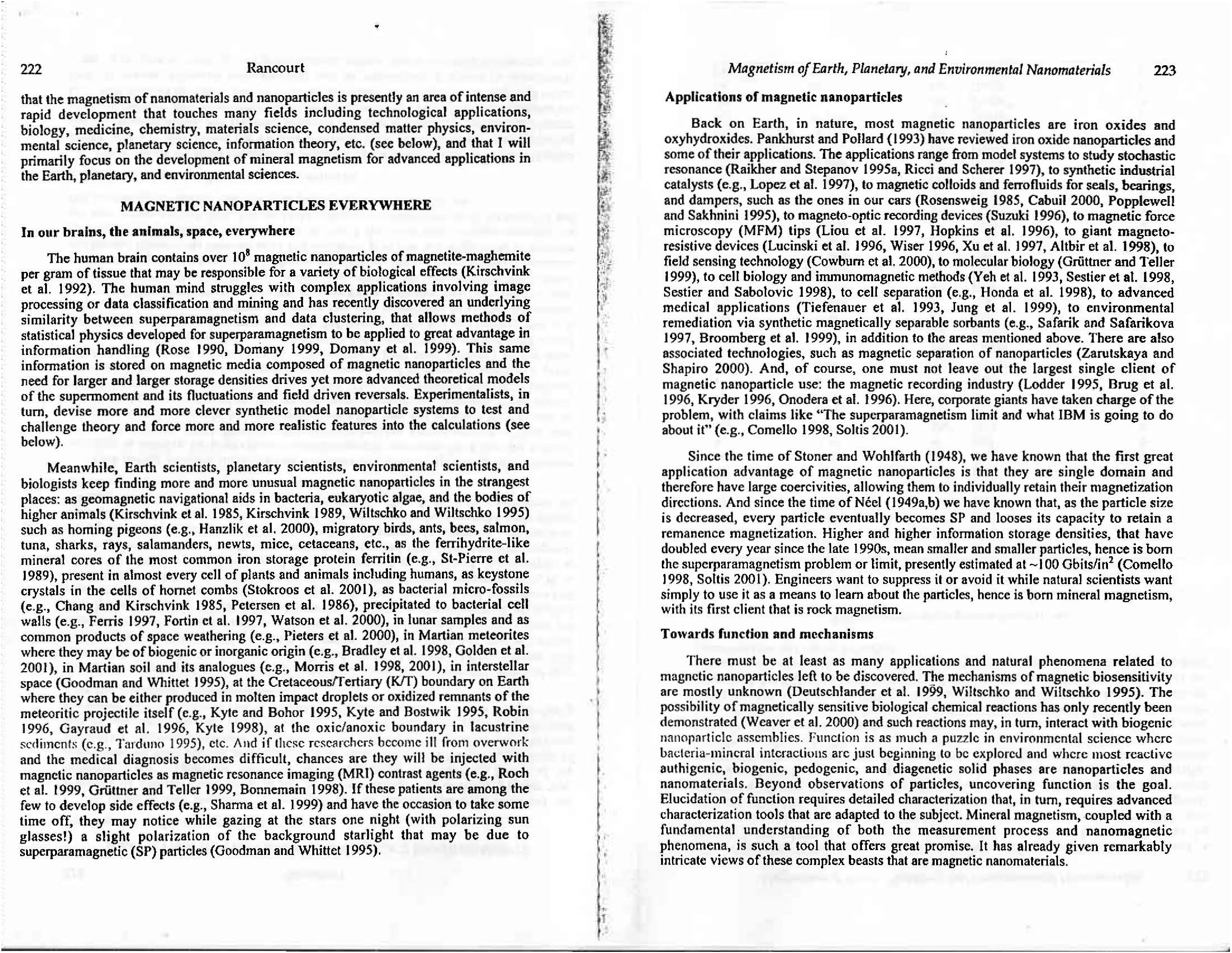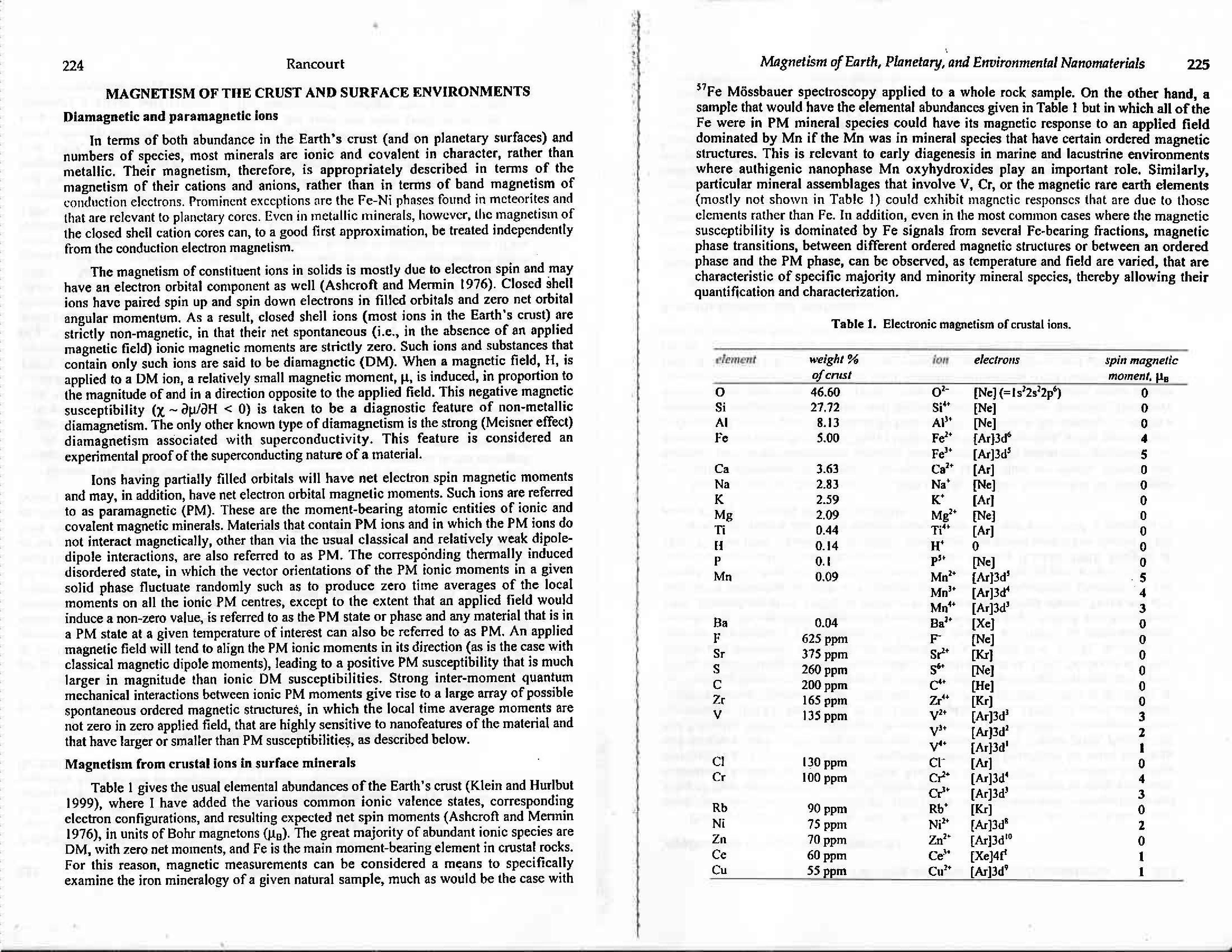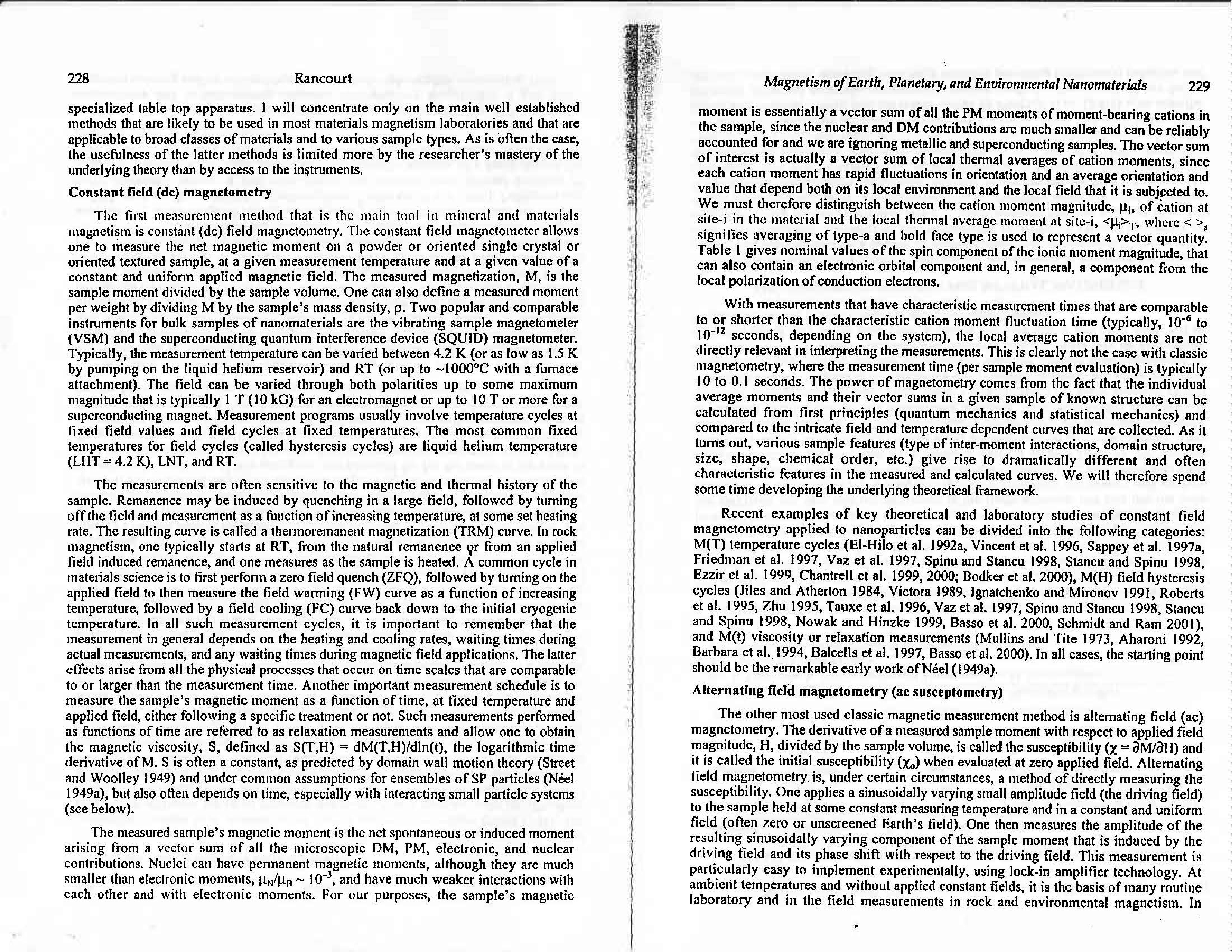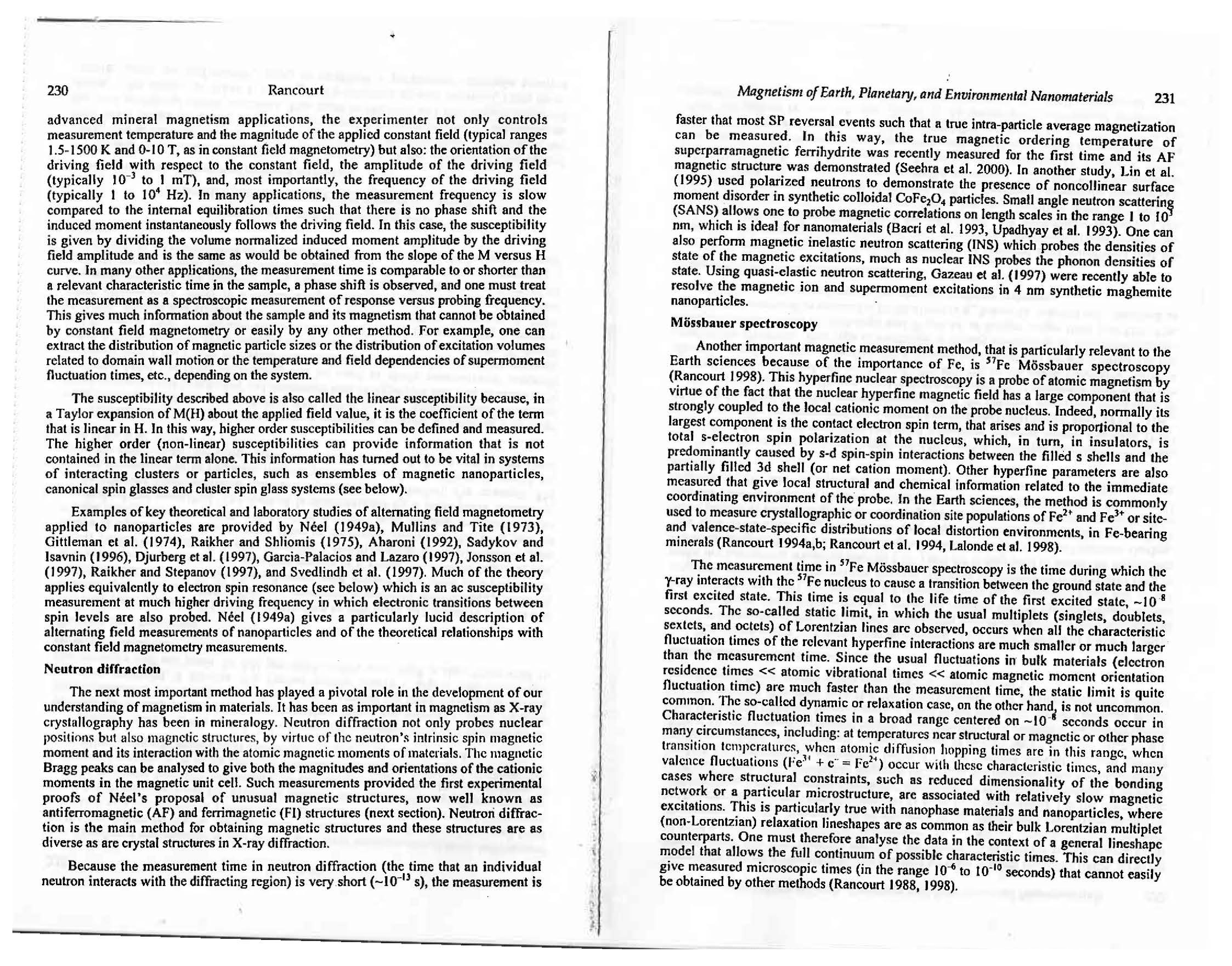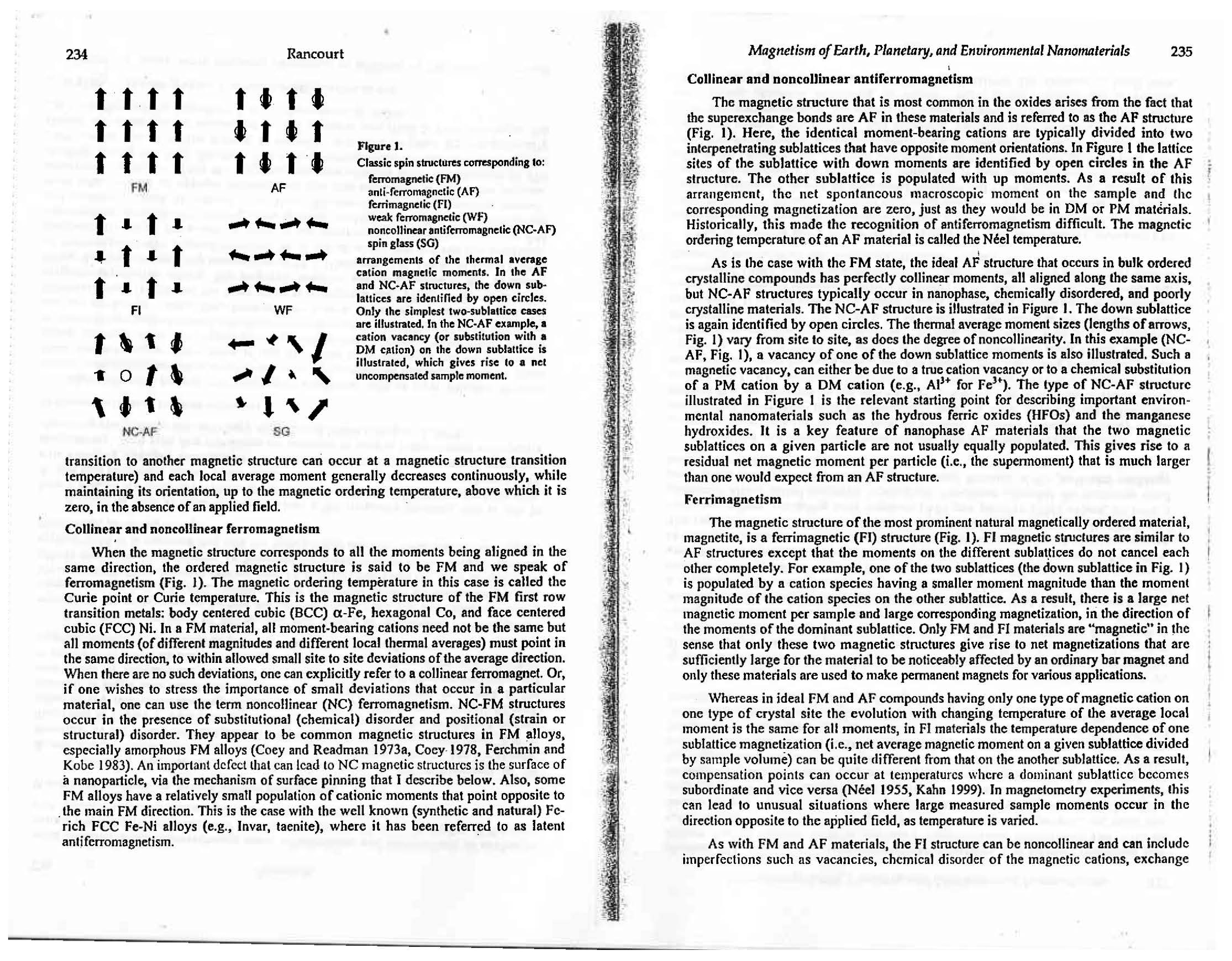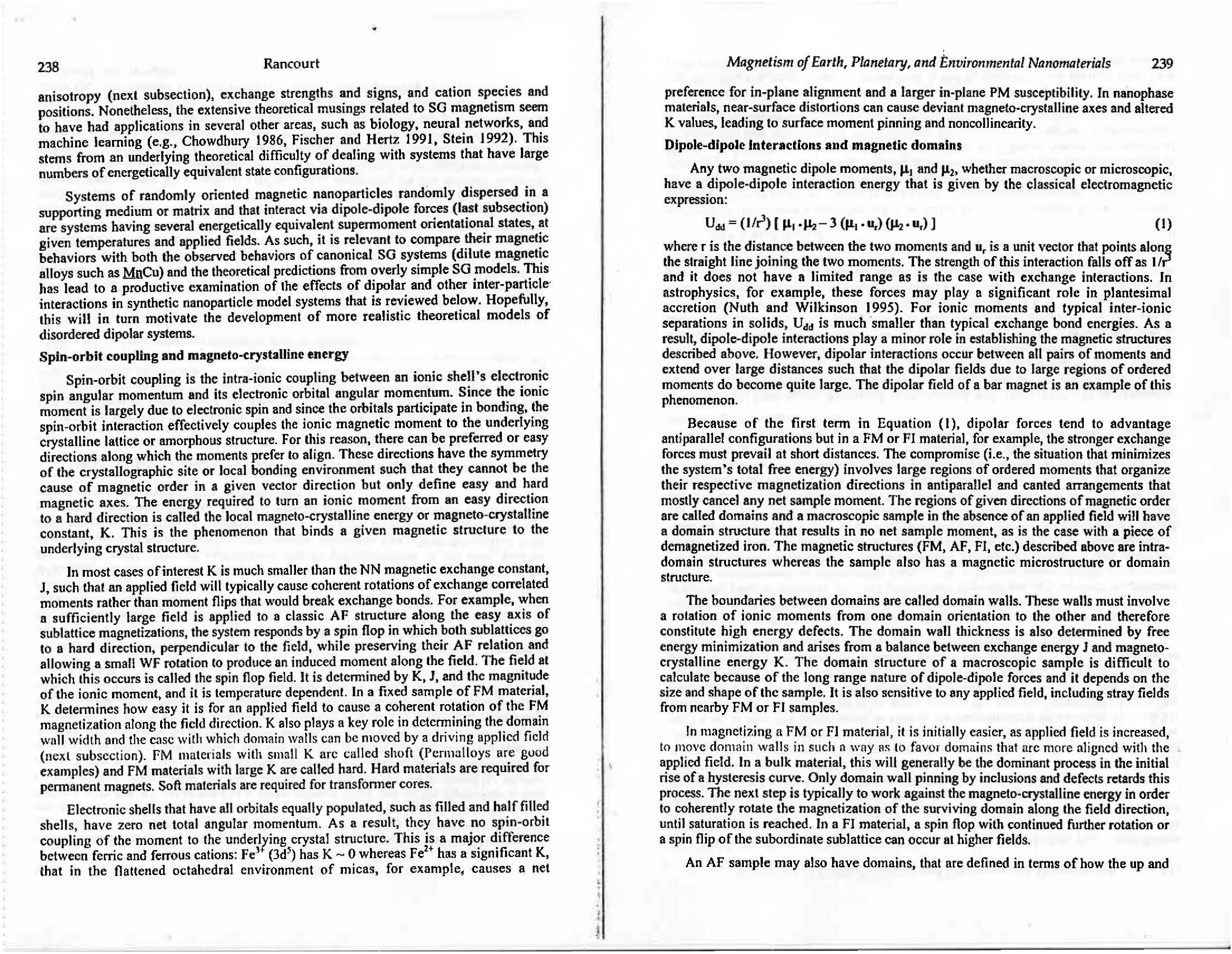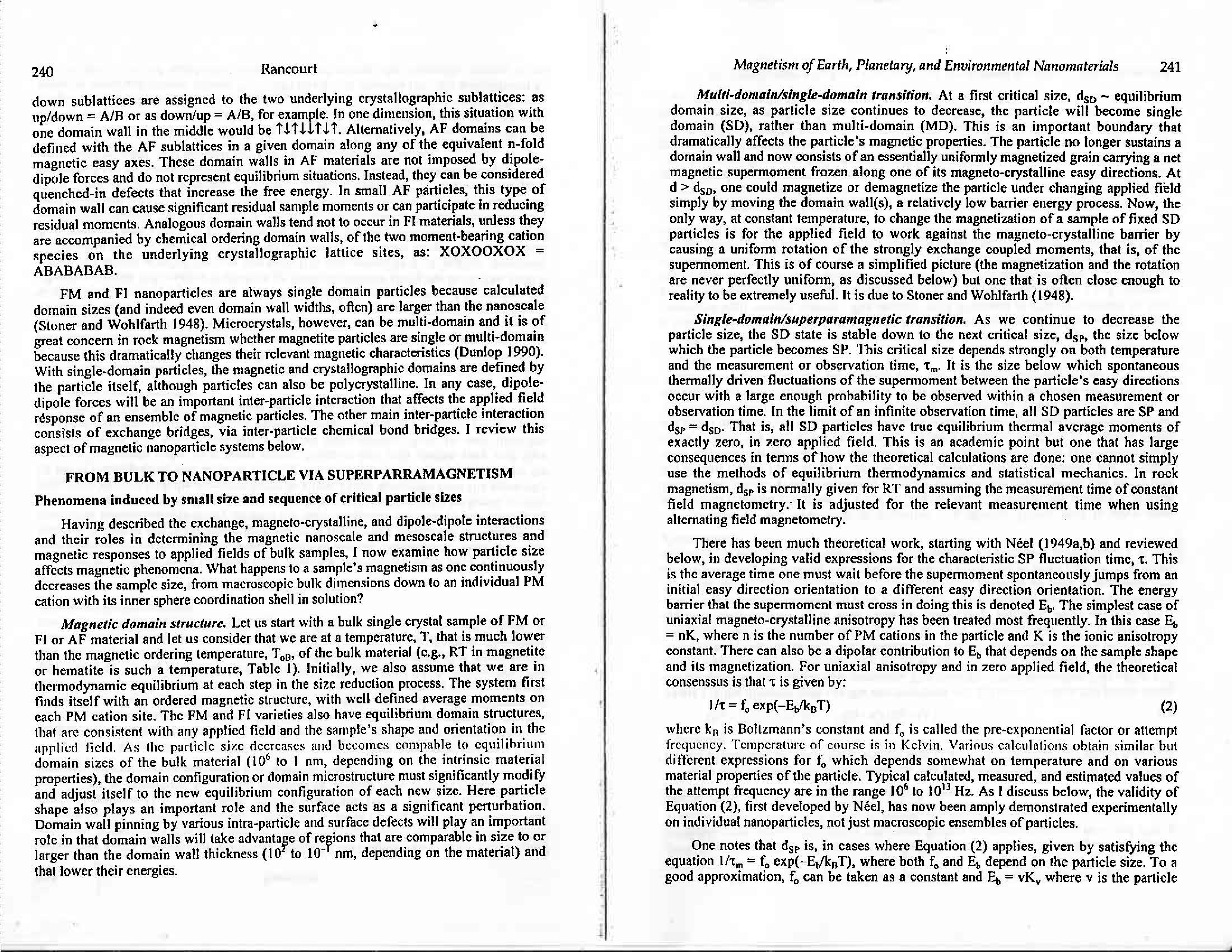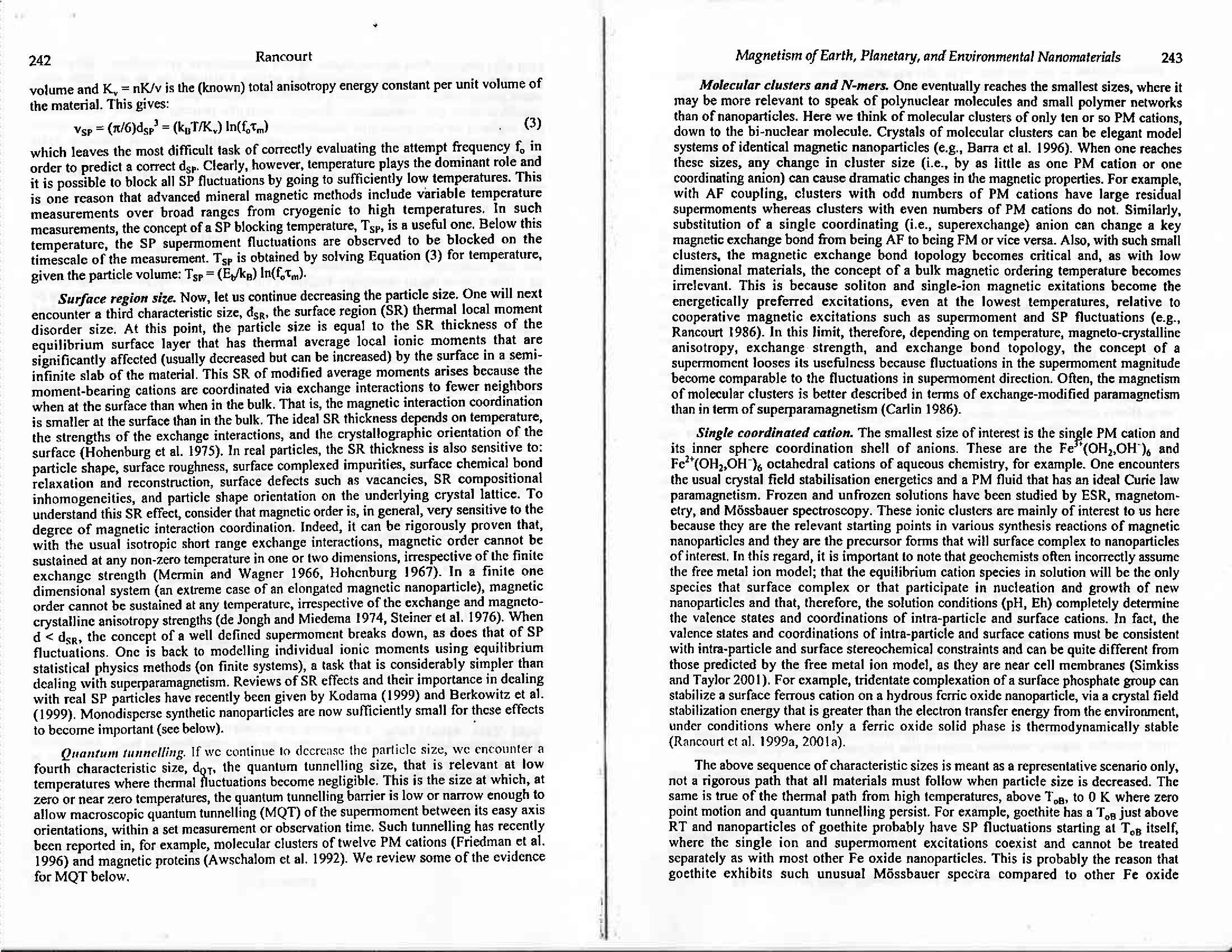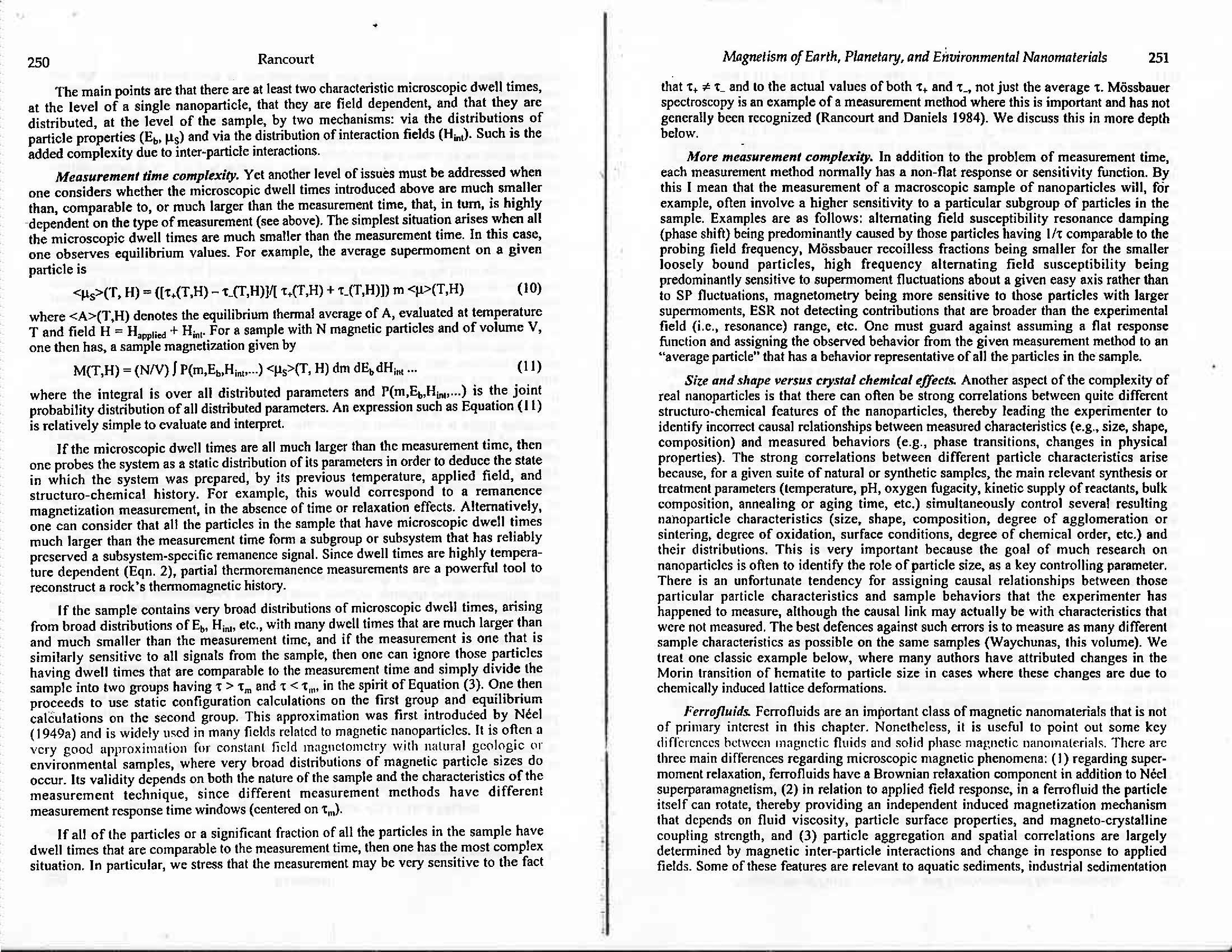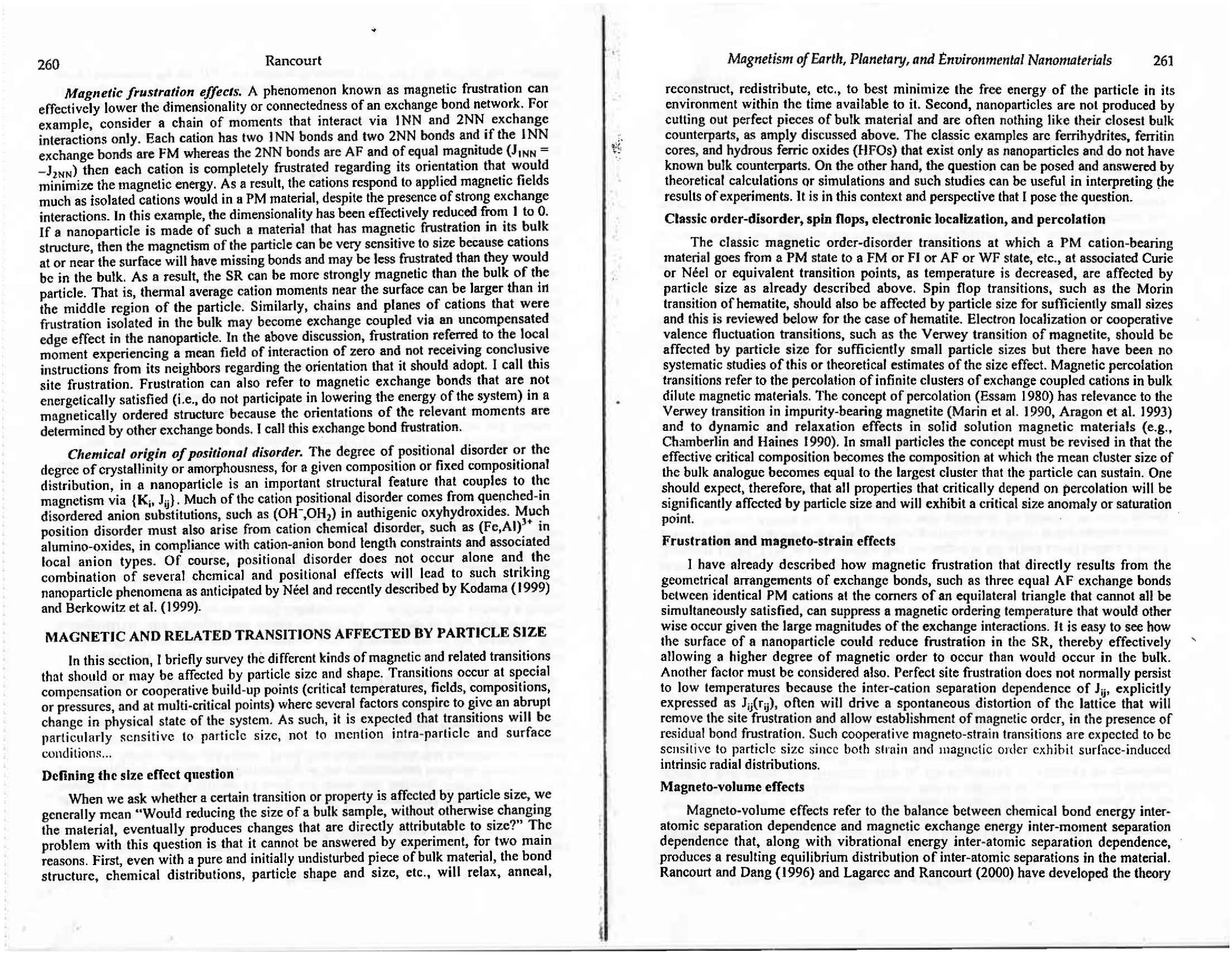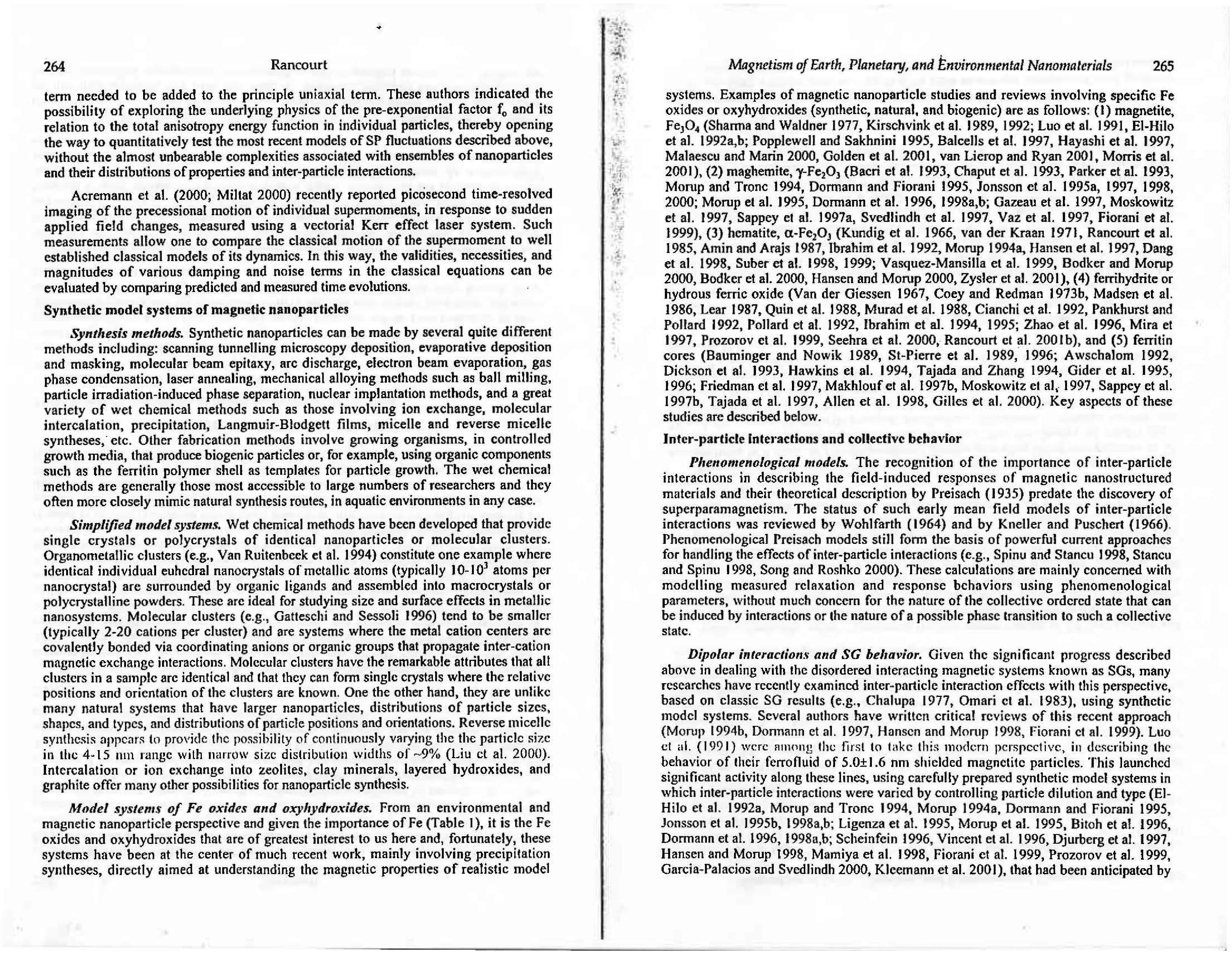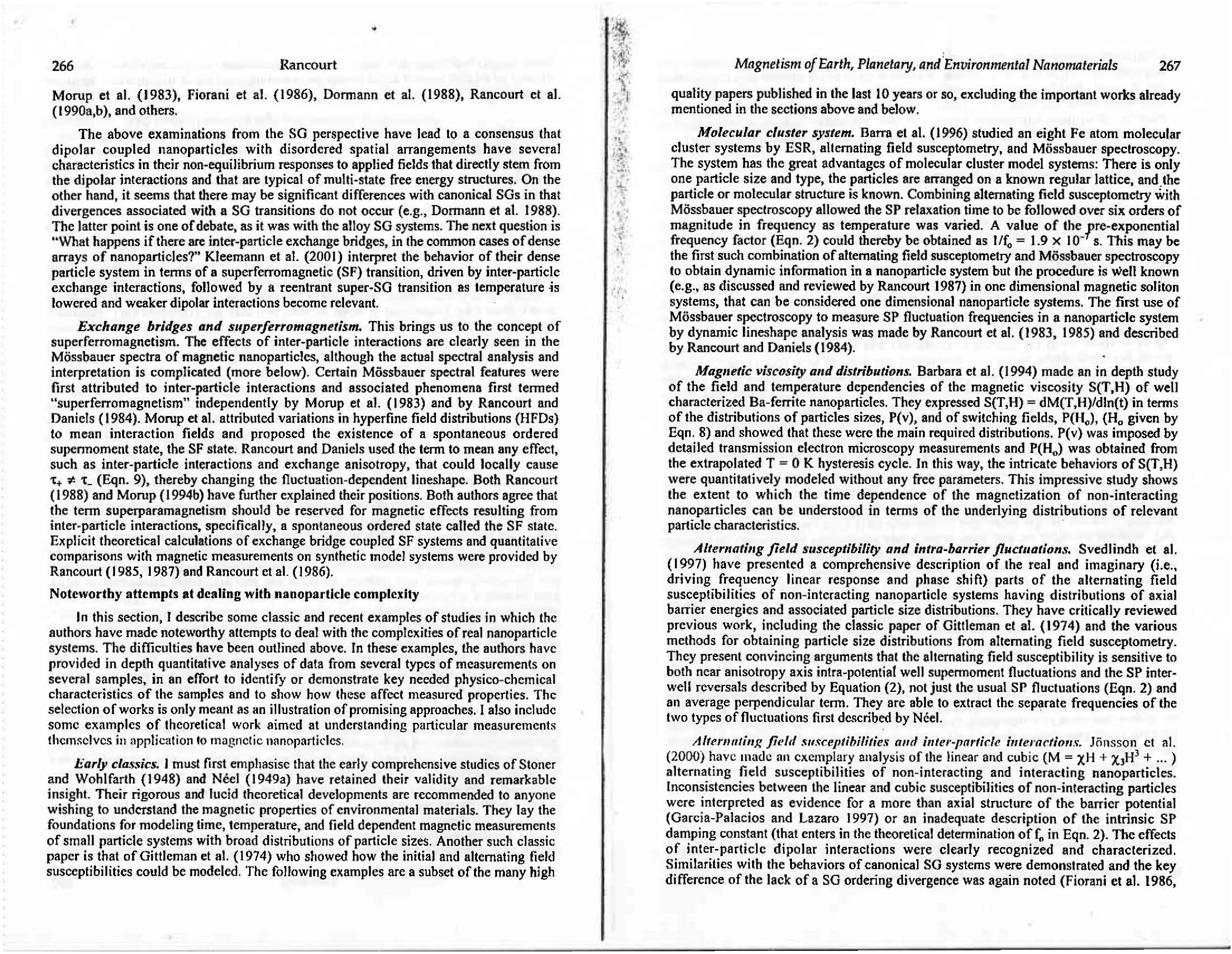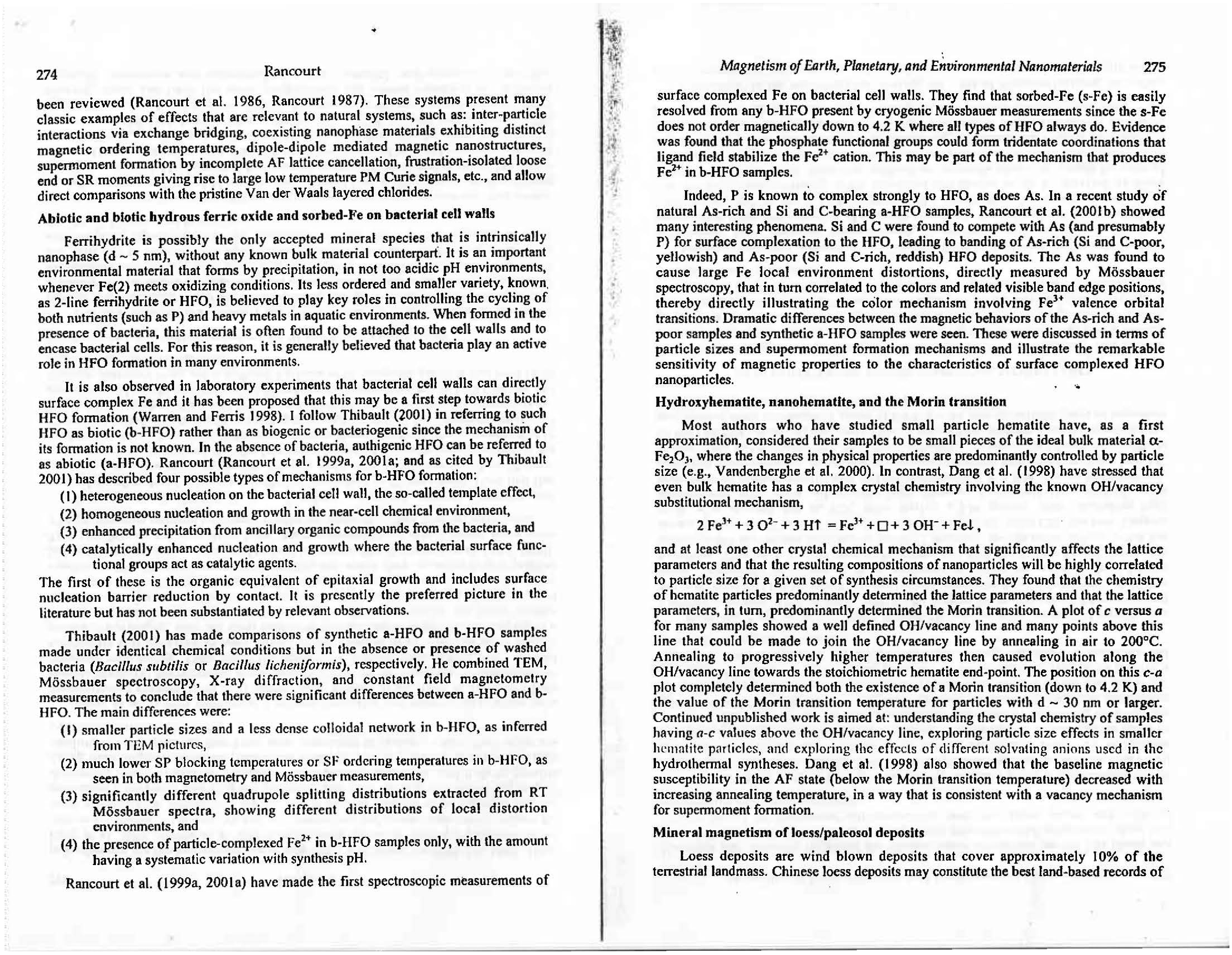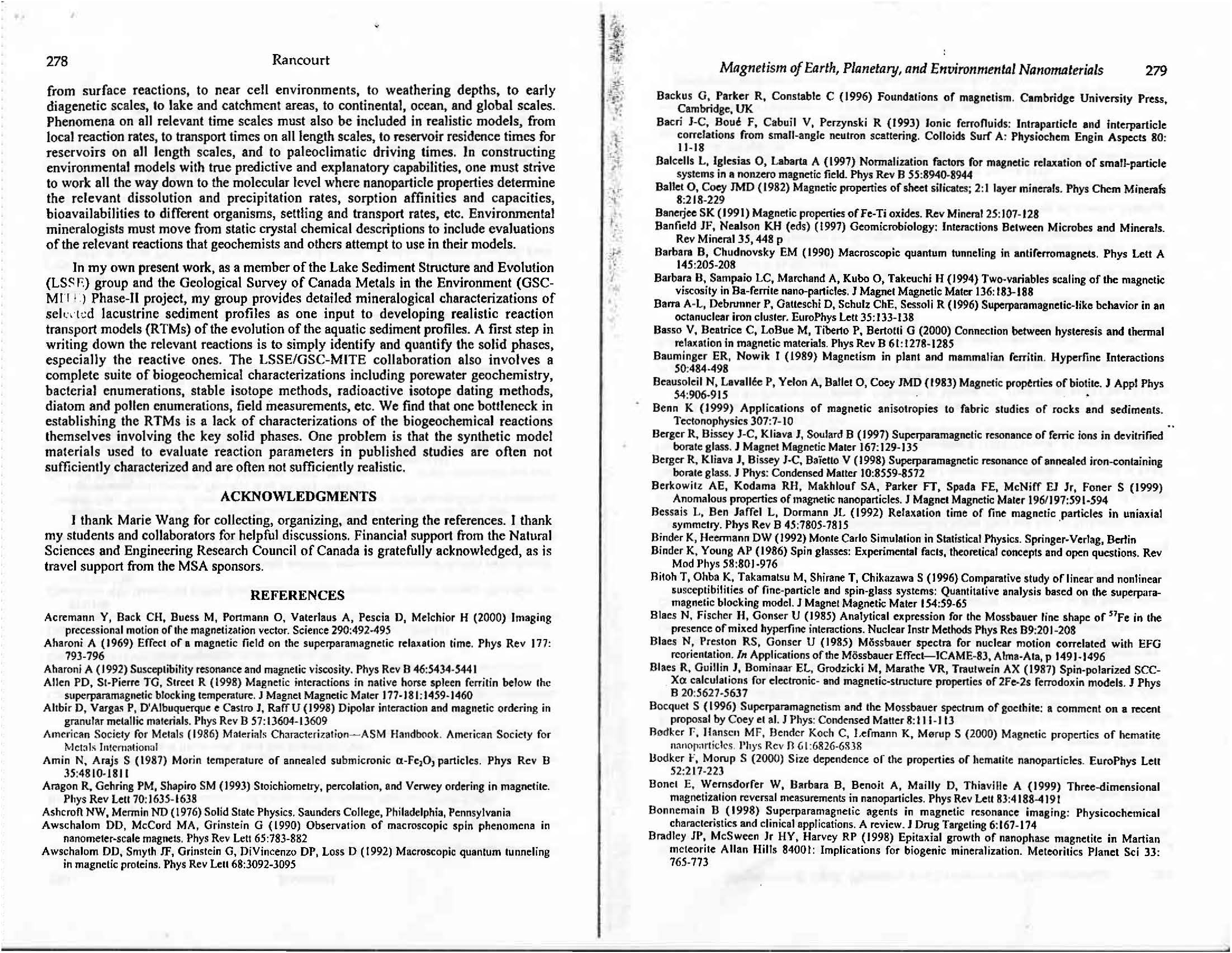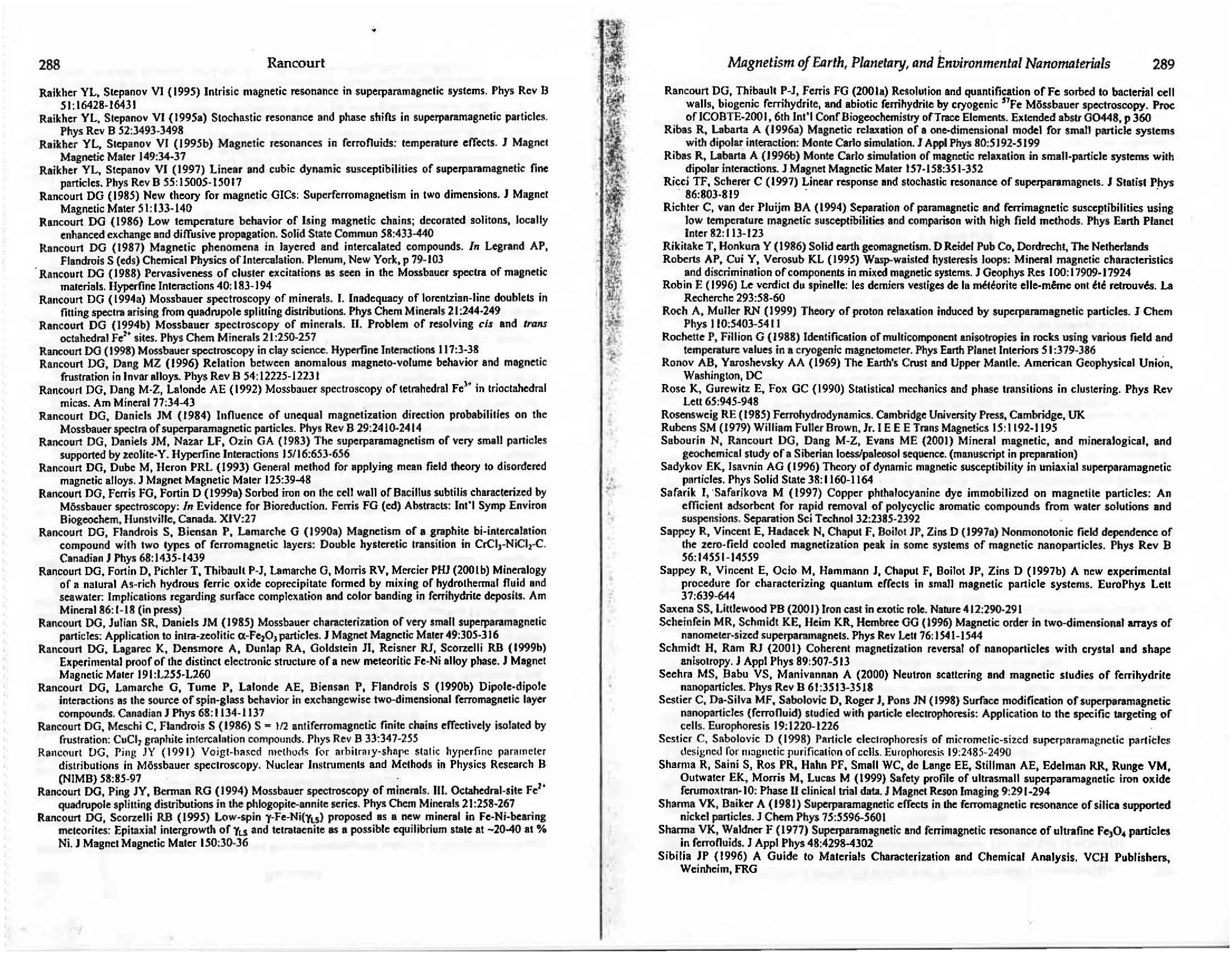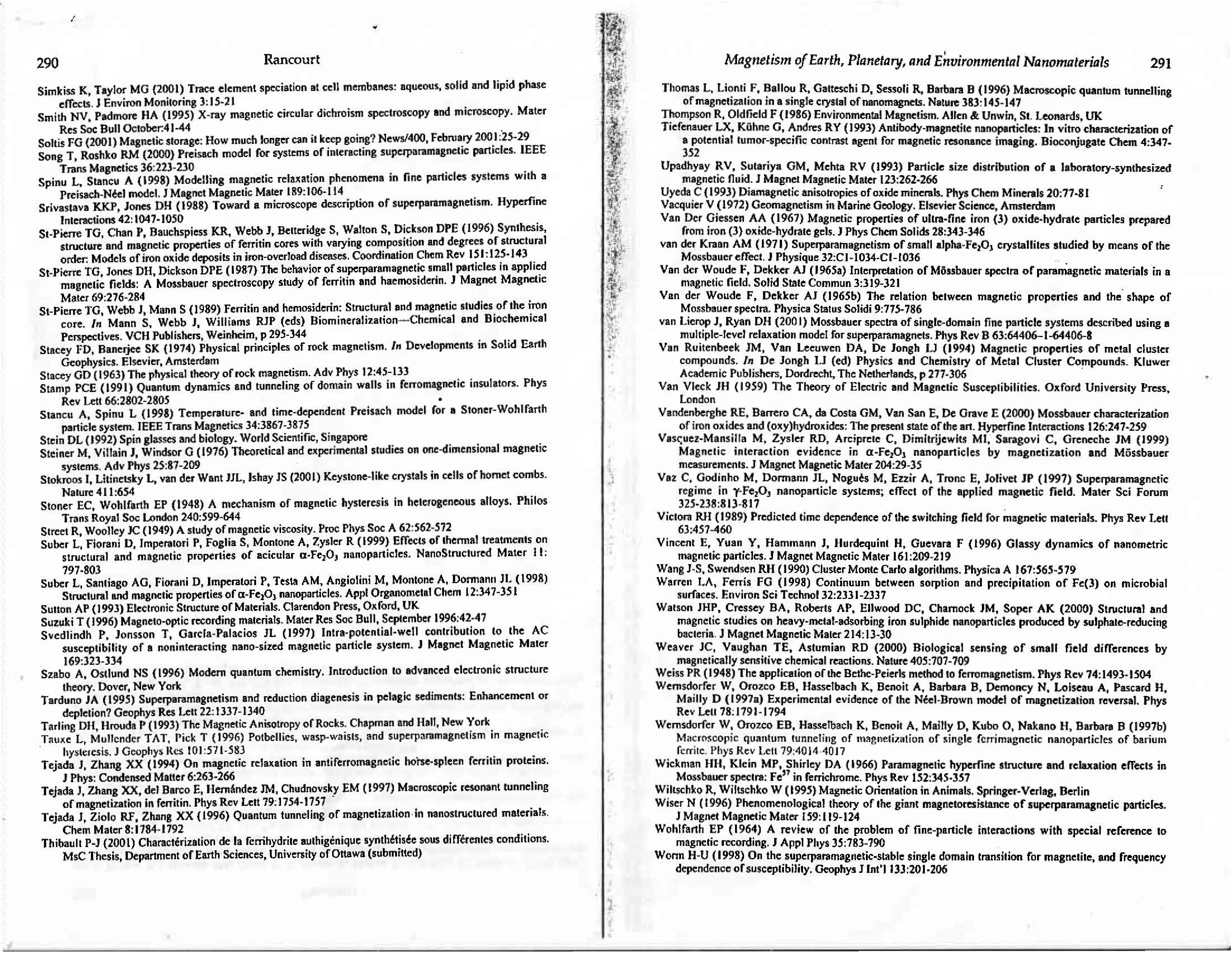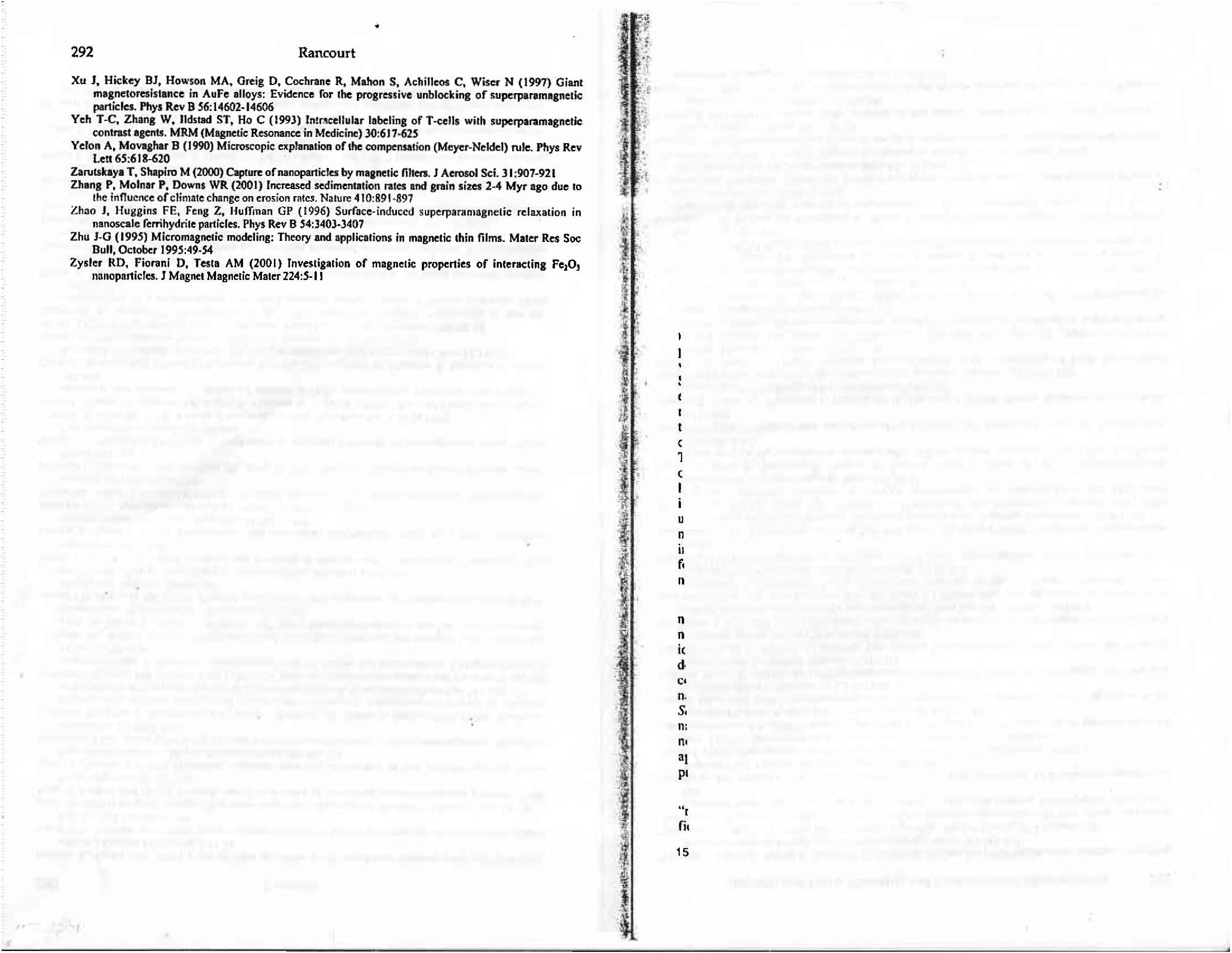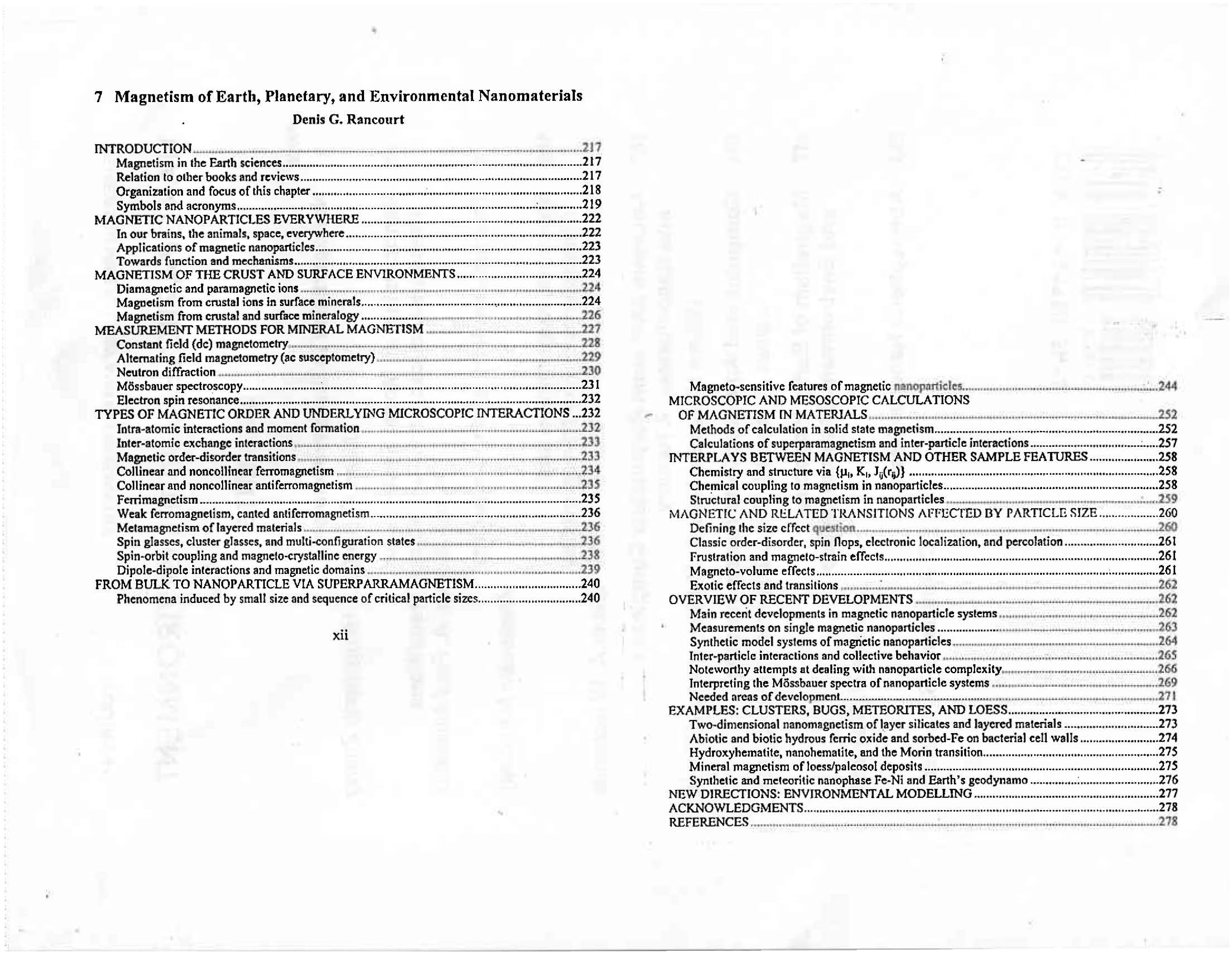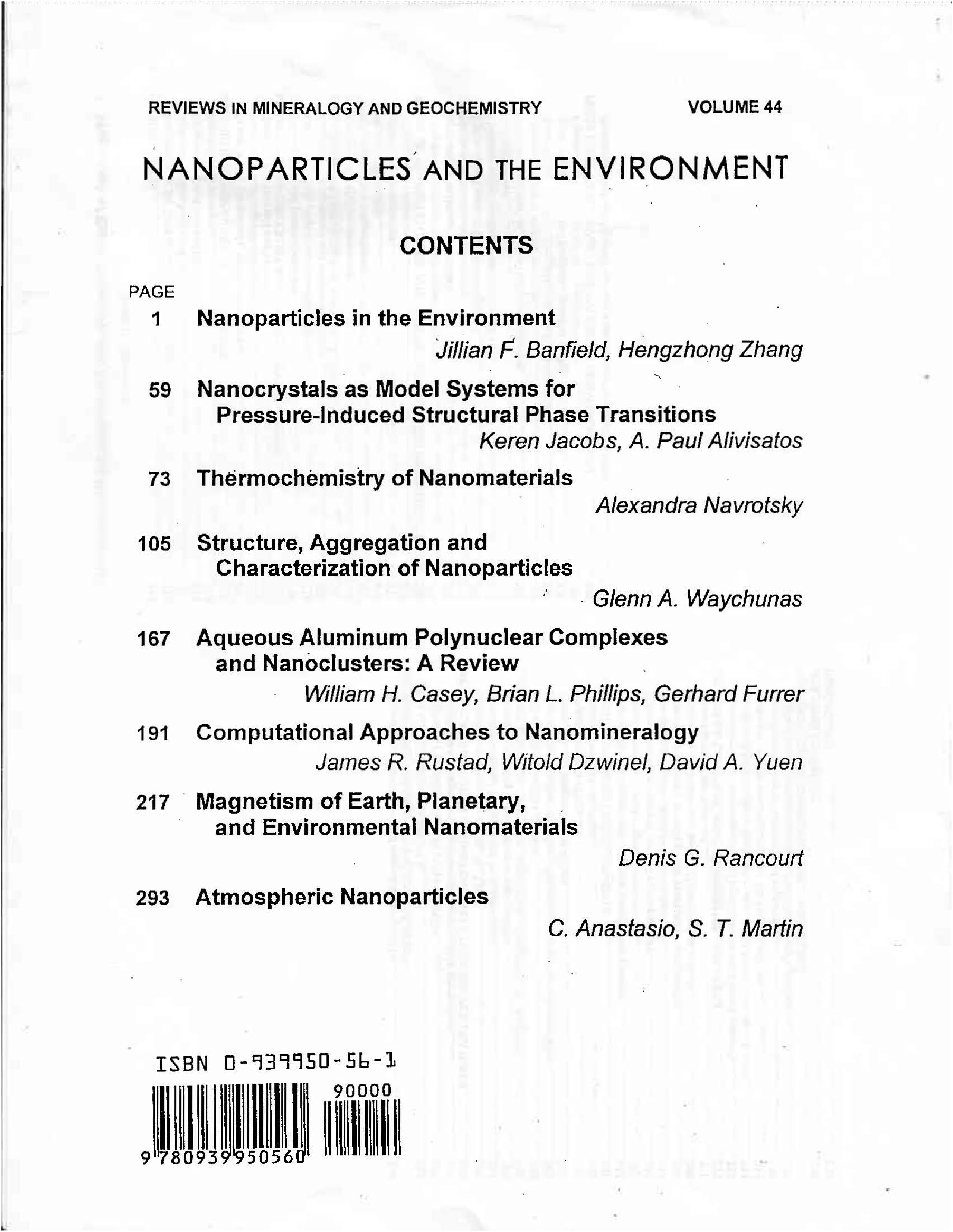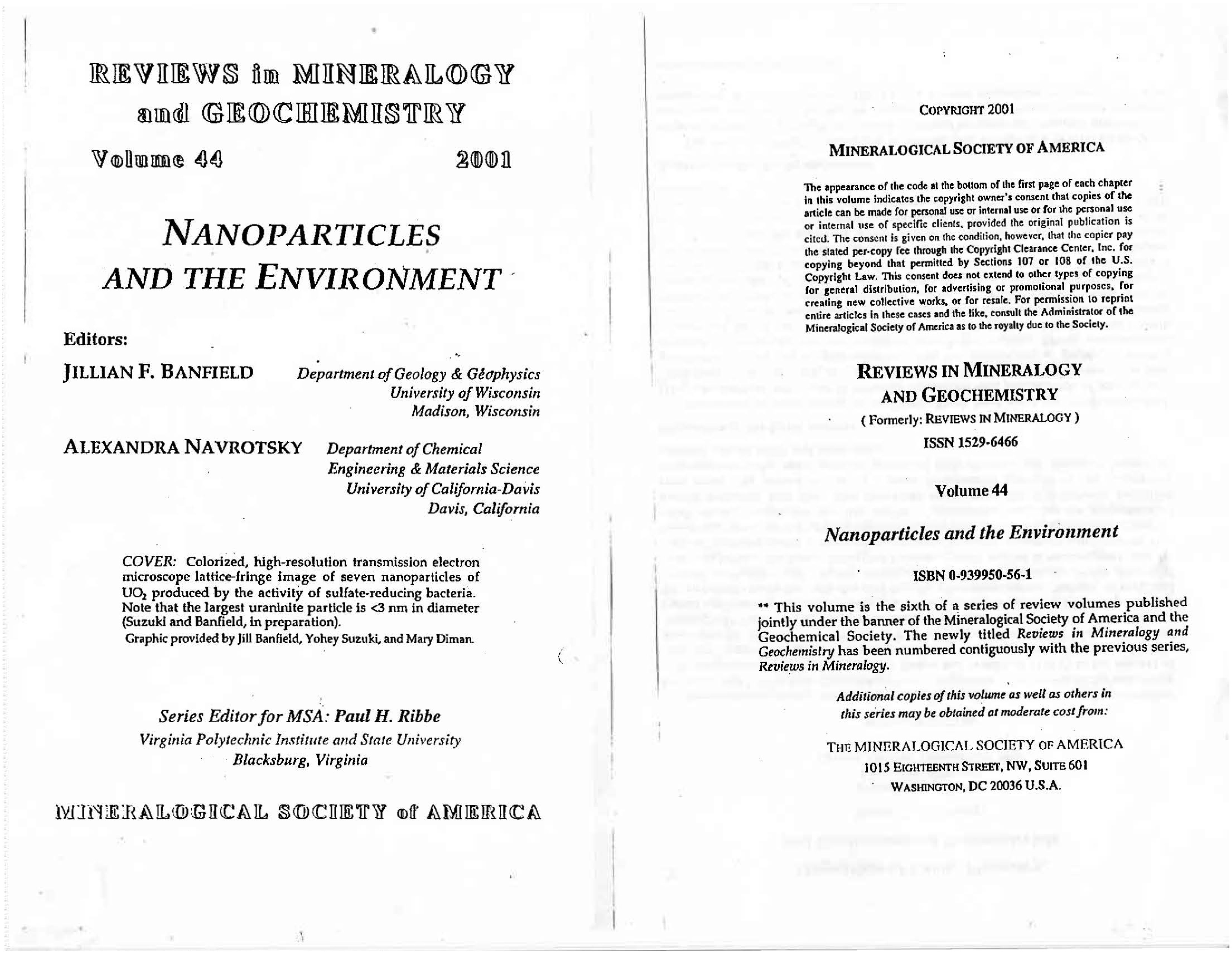Denis G. Rancourt
Reviews in Mineralogy and Geochemistry (2001) 44 (1): 217–292.
https://doi.org/10.2138/rmg.2001.44.07
Organization and focus of the chapter
Following a brief interdisciplinary look at magnetic nanoparticles and a brief overview of the magnetism of Earth's crust and surface environments, the core of this chapter is broadly organized into the usual divisions of measurement methods, underlying theory of both the phenomena themselves and the measurement methods, and applications to and interpretations of natural phenomena. As in all observational sciences, however, these three areas are highly interdependent and must not be treated as separate topics. Interpretation of the raw measured data relies on a chosen theoretical framework that in turn is judged appropriate to describe the expected phenomenon, etc. Selfconsistency is the result of much trial and error and is only attained once the phenomenon is judged to be understood, such that routine applications can be devised. The mineral magnetism of nanomatcrials is a developing area of intense present research where the interplays between measurement, theory, and intell'retation must be considered with care. For example, characteristic measurement times may be comparable to intrinsic sample property fluctuation times (e.g., SP supermoment fluctuations compared to the measurement frequency in an alternating field susceptibility measurement) such that calculations that assume thermodynamic equilibrium become inapplicable but stochastic resonance may become relevant. I have made a special effort to illustrate these interrelationships throughout this chapter, in order to do justice to the area and to enhance the general reader's appreciation of the subject.

